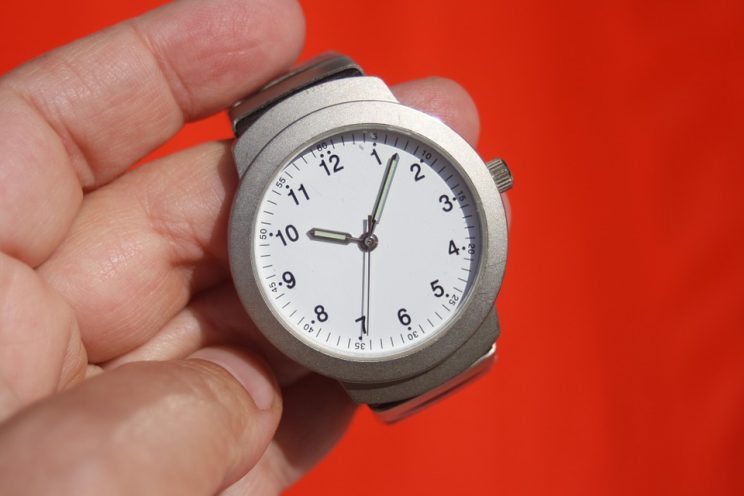Strategies for Helping Patients Adopt and Adhere to Physical Activity Programs
This module will centre on strategies for the adoption and maintenance of regular physical activity.
Once patients are ready to start increasing physical activity (i.e., they have indicated change talk and have developed discrepancy), you can assist by sharing different strategies that may help maintain physical activity participation.
Remember to continue to use Motivational Interviewing principles such as rolling with resistance, maintaining autonomy, and supporting self-efficacy. This can be accomplished by avoiding resistance, by asking permission to share a strategy, soliciting the patient’s own ideas, and providing choices rather than “advice giving.”
Goal Setting
Setting goals is one of the first steps for successfully starting a physical activity program. Even patients who are already exercising can benefit from goal setting.
In order to maximize effectiveness, it is important for the patient to write down all goals rather than just verbalize them. Simply verbalizing goals makes them easily forgotten, while putting them in writing makes goals seem more official and memorable.
Effective Goal Setting
Use the SMART principle to ensure that goals are well thought out and reasonable.
Specific
Ensure that the goal is specific. For example, “I plan on walking more” is not very specific whereas “I plan on taking a walk every evening for 30 minutes” is more specific.
Measurable
Goals should be measured in order to assess progress. For example, “I want to become more active” is a goal that, by itself, is difficult to measure. This goal can be made more measurable by thinking of how progress can be tracked (e.g., “I want to walk more. I will wear a pedometer to track the number of steps I take to see my progress.”)
Action-Oriented
The term action-oriented refers to action-oriented (behavioural) goals, not just outcome goals. For example, “My goal is to lose 20 pounds” is an outcome goal whereas “My goal is to lose 20 lbs. by walking 30 minutes a day and eating a sensible diet” includes both outcome and action-oriented goals.
Realistic
Goals should be realistic and achievable. The rule of thumb is that the patient should be at least 80% confident that the goal can be accomplished. If not, the goal should be modified until it is more realistic. Many people are deconditioned or suffer from limitations that make it hard for them to be physically active. Therefore, setting modest, realistic goals is very important.
Time-frame
A time-frame outlines when goals are meant to be achieved. For example, if a patient states “my goal is to run a 5k race without stopping to walk,” it is important to probe when this goal will be achieved (e.g., “The race is on Labour Day weekend.”).
An example of a SMART goal:
My goal is to run in the Run for the Cure race on Labour Day weekend. I hope to be able to run without having to stop running and walk. I plan to reach this goal by running 3 days per week for 30-45 minutes at a moderate intensity. I plan on running on the streets in my neighbourhood. My runs will be scheduled for 6 am on weekdays.
Overcoming Barriers
One reason that many people have trouble starting a physical activity program, or fail to maintain one, is because they have significant barriers that make it difficult. One strategy for overcoming barriers involves having the patient identify potential barriers or obstacles to physical activity and to think about solutions or plans to circumvent these issues.
If possible, it is important to create this list before barriers arise so that a plan is in place that will reduce the likelihood of the patient reverting to sedentary ways when a barrier arises. The table below features some of the common barriers to physical activity faced by many people with corresponding coping strategies.
Potential Barrier
|
Strategy for Coping |
|
“Lack of time”
|
– Schedule short bouts of physical activity into my day. – Adopt less time consuming activities like jogging or power walking. |
|
“Lack of motivation”
|
– Find an exercise partner. – Schedule physical activity sessions into my day and view them as important, like other appointments in my day. – Find fun activities to do like sports, dance classes, or walking with friends.
|
|
“Lack of energy/too tired”
|
– Tell myself that physical activity often makes me feel more energized. – Make a pact with myself that I try exercising for 10 minutes and, if I am still too tired, I can stop. Chances are I will feel like continuing. – Schedule physical activity for times in the day when I am most energetic and include the option for activities that are easiest for me to do when I am feeling tired (like walking). |
|
“Bad weather”
|
– I normally walk outside. I can buy myself a rain suit and not let it stop me! – I will make a list of activities I can do inside on days when the weather is bad (e.g., mall walking, aerobics using a DVD, riding my exercise bike, dancing to music).
|
Self-Talk
For some people, attempts to become physically active are sabotaged by negative self-talk. Negative self-talk is internal dialogue through which a person puts him or herself down about skills, fitness level, self-discipline, weight, or other components of physical activity and fitness.
Sometimes patients indicate negative self-talk through statements such those outlined in the table below. If you detect negative self-talk, it is important to bring this to the attention of the patient. Explain that negative self-talk hinders motivation and makes long term physical activity adoption less likely. Help the patient learn how to identify negative self-talk and to counter it by creating a positive self-talk solution. For example, here are some positive self-talk solutions to several negative self-talk situations:
Negative Self-Talk
|
Positive Self-Talk Solution |
| “I have been at work all day and I am tired. There is no way I can exercise today.” | “I may be feeling tired, but I can make myself feel better by taking a walk.” |
| “I’ll just fail again since I have always failed at trying to be active.” | “I may not have been successful in the past, but this time is different. I can do it!” |
| “I’ll probably walk 25 feet and need to sit down and have a rest! I’m really not the athletic type.” | “I may not be an athlete but I can do it! Even if I have to rest, it is okay. At least I am out here doing it!” |
Other Ideas for Keeping Patients Motivated
Get an exercise buddy
Exercise partners offer encouragement and companionship. They also make people less likely to skip planned physical activity sessions.
Stimulus control
Create prompts for physical activity such as a reminder through a computer scheduling program, running shoes placed in view by the door, and notes posted in a prominent place as reminders to complete a scheduled exercise session.
Reinforcement control
Implement rewards for engaging in physical activity. For example, plan that, if all exercise sessions are completed in a week, the reward is a guilt free break from daily activities by watching a favourite movie on Friday night.
Contingency contract
Write a contract outlining goals and goal supporting strategies. Sign the contract and put it in view such as on the fridge.
Schedule physical activity
Write physical activity sessions into the weekly schedule and try and keep the mindset that they are just as important as other appointments.
Try and think outside the exercise box – physical activity can be achieved through a variety of means, not just from jogging or gym exercises. Brisk walking, playing sports/active games, dancing, gardening, and biking are all alternatives to traditional gym exercises.
Key Points:
- Goal setting using SMART goals is the first step in initiating a successful physical activity program.
- Identifying barriers and finding solutions in advance is an effective way of reducing the possibility of relapsing to a sedentary lifestyle.
- Negative self-talk can sabotage efforts to maintain a physical activity program.
- A number of other simple strategies may be helpful for maintaining interest and motivation in physical activity participation.
From this module you will have gained an understanding of several strategies for the adoption and maintenance of regular physical activity. The next module will focus on barriers that nurses may encounter while providing physical activity counselling to patients.
Please click the following link in order to start the quiz.




